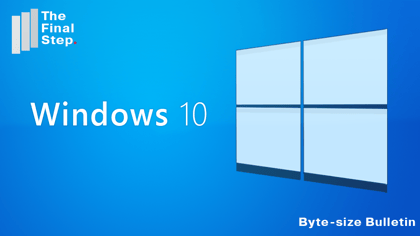
The example we are going to use to illustrate how folder templates are useful to businesses is folders for clients.
Let's say you work with clients, providing IT (sound familiar?).
Every time you work with a client, you have the same legal and financial information to process and document. So it makes sense to have a 'folder template' that can be used for every client, which contains subfolders for all this information.
With each new client, you just copy and paste your 'folder template', saving you precious time and energy.
Here's how to do this.
1. Start with creating your folder
- There are several shortcuts you can use to create a folder:
- Right-click ‘new’, go to ‘folder’ and then a folder will appear.
- Press the ‘Control’, ‘Shift’ and ‘N’ keys together to create a new folder.
- You can also go up to ‘home’ on the top navigation menu and create your new folder there from the drop-down options.
2. Name your new folder template
- You can name your folder template whatever works best for its purpose. If it’s a generic template to be used with clients or vendors, something like a ‘generic client template’ or ‘vendor template’ would work well.
- For this tip, we’ll simply name it ‘ template’.
- You can add additional elements to the name of your template to influence its file placement. If your files are ordered alphabetically and you want the folder to drop to the bottom, put a ‘Z’ at the front of it.
- If you want it to appear at the top, put a symbol in front, like an @ sign, a hashtag or a £ sign.
3. Enter all the information inside the template
- Use one of the earlier shortcuts to create a new folder inside this template folder. Create as many folders as you need inside the template folder.
If the folder is a generic template for clients you may need to create:
- An ‘invoice’ folder for invoices
- An ‘Estimates’ folder for price estimates
- A ‘Legal’ folder for service agreements and other legal documentation.
You can create as many folders as is necessary for the subject matter of your template. However, we strongly recommend keeping the folders you have at this point in the template to a small amount, ideally no more than five.
Because these folders should cover large areas of your dealings with for example clients- saving you from the confusion of navigating multiple hyper-specific folders.
4. Create a template document for the folder template
- In whatever document creation platform you use (like Word, SharePoint, or Google drive) create a document, or have one ready, that is used for all the ‘clients’ or ‘vendors’ the folder template could cover.
- A good example is a ‘client service agreement’, which all your clients will need to sign. Having a blank copy of this document ready in each ‘Generic Client folder’ means when new clients need to sign this documentation finding it will be simple and easy.
- When you have this document template, we can move on to how you include a copy of it in the folder template.
5. Including a copy of your document template in the folder template
- Copy and paste your document template into the relevant folder in your folder template. For this client example, you would put the ‘client service agreement’ in the ‘Legal’ folder of the Generic client template.
- Now each time we copy the folder template, this document will be copied with it. Each time one is filled out for a client in their respective client folder, you can change the name of it to indicate the client.
- For example, adding their company name, or the CEO's last name then their first name to the front of the document name.
6. Start creating
Now you’ve learnt how to create folder templates. We hope this process has made your experience of using folders easier and more efficient.
A lot of productivity and motivation is lost due to confusion. Organising your work through simple and effective template folders is a great solution.
We recommend also creating a document that details the structure and formatting of your folder template, and what individual folders will be included inside, so new employees can refer to it as they become integrated into your company.
If this tip has interested you, we recommend checking out a recent byte size bulletin we wrote on effective methods to organise your folders.




